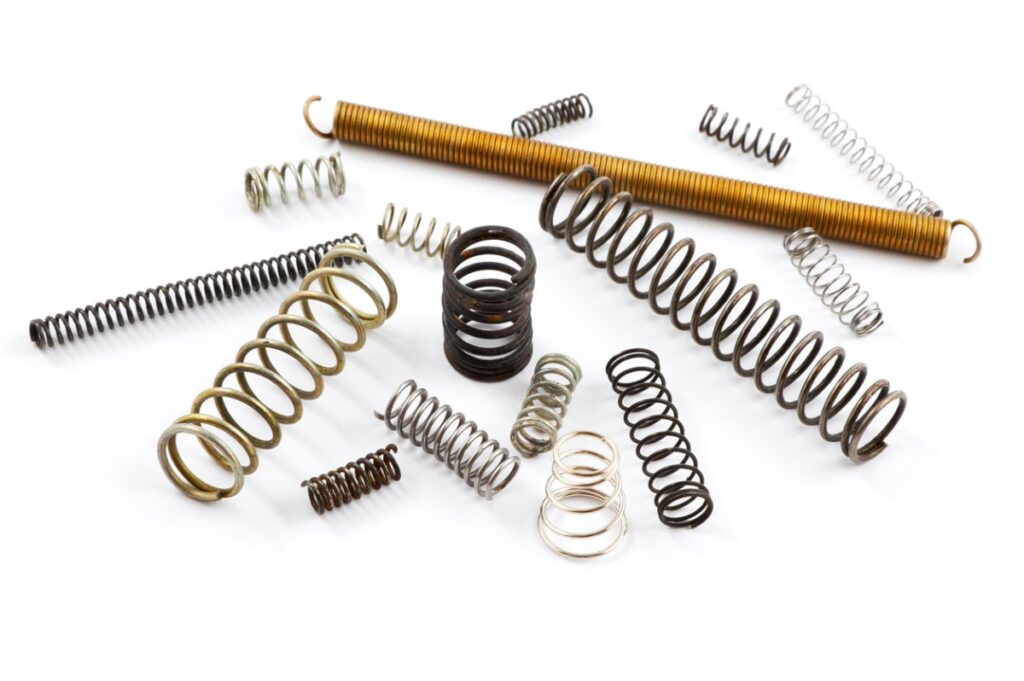
Have you ever wondered how the steel that springs to life in everyday objects is manufactured? Spring steel, with its remarkable ability to return to its original shape after bending or deformation, plays a crucial role in a wide range of applications, from construction to consumer goods.
In this article, we’ll unravel the fascinating process of how spring steel is made. Prepare to dive into the world of metallurgy and discover the secrets behind this resilient material.
The Versatility of Spring Steel
From the humble coil springs in your mattress to the robust suspension systems in bridges, spring steel is everywhere. Its unique ability to withstand repeated bending without permanent deformation makes it an essential material in various industries. But have you ever stopped to think about how this versatile metal is created? Understanding the manufacturing process of spring steel not only deepens your appreciation for its utility but also sheds light on the intricate world of metallurgy and steel production.
The Meticulous Journey Begins
Spring steel isn’t your run-of-the-mill metal; it’s a product of careful engineering and precision. The journey to transform raw materials into spring steel involves a series of meticulous steps, each contributing to the final product’s remarkable properties. As we delve into the fascinating process, you’ll gain insight into the selection of alloying elements, the controlled heating and cooling techniques, and the rigorous testing that ensures spring steel’s resilience. So, if you’re curious about the alchemy that turns iron into a material that can withstand countless cycles of stress and strain, read on.
The Art of Making Spring Steel
Understanding the art of making spring steel can inspire a profound appreciation for the engineering and craftsmanship involved. By learning about the precise control of alloy composition, heat treatment, and tempering processes, you’ll gain insight into how to create steel that possesses the desired combination of strength, flexibility, and durability. This knowledge is invaluable for engineers, designers, and anyone interested in optimizing material selection for various applications. With the secrets of spring steel production at your fingertips, you can unlock a world of possibilities in product design and innovation.
Unveiling the Manufacturing Process
So, how is spring steel made? Let’s explore the step-by-step process of turning raw materials into the resilient material that plays a vital role in countless industries. Whether you’re a metallurgy enthusiast, a product designer seeking the perfect material, or simply someone curious about the science behind everyday objects, understanding the making of spring steel is a rewarding journey.
So, without further ado, let’s dive into the fascinating world of metallurgy and uncover the secrets of spring steel production.
1. Raw Materials Selection
The journey of spring steel begins with the careful selection of raw materials. Typically, this involves choosing high-quality steel alloys, such as carbon steel or low-alloy steel, that possess the necessary properties for spring applications. The specific composition of the alloy will influence the steel’s ability to withstand deformation and return to its original shape.
2. Melting and Alloying
The selected steel is then melted in a furnace, reaching temperatures upwards of 2,500 degrees Fahrenheit (1,371 degrees Celsius). During this process, various alloying elements are introduced to the molten steel to impart specific properties. Common alloying elements include silicon, manganese, and chromium, which enhance the steel’s strength and resilience.
3. Casting or Rolling
Once the steel has been alloyed, it is shaped into its initial form through either casting or rolling. Casting involves pouring the molten steel into molds to create ingots or billets. Rolling, on the other hand, passes the steel through a series of rollers to form it into desired shapes, such as sheets or bars. The choice of method depends on the intended application of the spring steel.
4. Heat Treatment
The key to spring steel’s remarkable properties lies in the controlled heating and cooling processes. After shaping, the steel undergoes heat treatment. This typically involves heating the steel to a specific temperature and then rapidly cooling it, a process known as quenching. This abrupt cooling “locks in” the steel’s hardness and strength, making it resilient to deformation.
5. Tempering
To strike the right balance between hardness and flexibility, tempered spring steel is subjected to a secondary heat treatment called tempering. During this process, the steel is reheated to a lower temperature and then slowly cooled. The controlled reheating and cooling allow for the adjustment of the steel’s hardness, ensuring it can withstand bending and deformation while returning to its original shape.
6. Quality Testing
Before spring steel is deemed ready for use, it undergoes rigorous quality testing. This includes assessing its mechanical properties, such as tensile strength and elasticity, to ensure it meets industry standards. Additionally, microstructural analysis may be performed to verify the steel’s integrity. This meticulous testing guarantees that spring steel delivers consistent performance in various applications.
Conclusion
In conclusion, spring steel’s journey from raw materials to a resilient material is a testament to the precision and expertise of metallurgists and engineers. The careful selection of alloys, controlled heating and cooling processes, and rigorous quality testing all contribute to the creation of a material that can withstand countless cycles of stress and strain.
Understanding how spring steel is made provides valuable insights into material science and inspires innovation in industries where durability and flexibility are paramount. So, the next time you encounter a spring in action, you’ll appreciate the craftsmanship that goes into its creation.
Contact KB Delta for compressor valve parts and more information about compressor valve performance.
